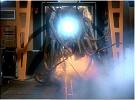mdiehl
Posts: 5998
Joined: 10/21/2000
Status: offline

|
Stanley Weintraub (A Long Day's Journey into War) mentioned that the IJN recon reported heavy clouds at 1500m. How does that square with level bombing attacks from 10,000 feet? Can anyone confirm the 10k feet altitude for the Kate attacks?
[QUOTE]
1. Drydocks are entered and exited through flood gates.
2. Flood gates are made of wood or metal.
3. Wood or metal will bend, splinter, deform and collapse under excessive pressure.
4. There is water outside the gate in a drydock, even when the side with the ship on the blocks is dry.
5. Sufficiently powerful bombs dropped alongside the drydock gates in the water will create blast overpressure in the water.
6. The blast overpressure will splinter, deform, damage or destroy the gates. Or it will damage the hinging, locking or swinging mechanisms for the gates.
7. In any case, the drydock is now unusable until repaired.
8. This is not the same as destroying the drydock itself as was done at St. Nazaire, but it will prevent the repair of underwater damage to warships for several months as parts are sent out from CONUS and the drydock repaired.
9. Again, there are a number of maintenance shops, for torpedoes, engines, turret and FC that could be profitably destroyed at a port. All such losses would have delayed repairs to warships in Pearl Harbor until replaced.
10. The ability of the IJN to attack surface land targets from the air was suitably demonstrated by the "leveling" of Darwin by the Kido Butai in 1942.
11. The reason I stopped posting here is that you people, not just mdiehl, but, unfortunately, him mostly, cannot execute a civil exchange of opinions and information w/o making it personal. None of you would have survived your first AAR at the NTC. [/QUOTE]
Points 1-5 agreed to without objection. Point 6 is an overclaim. It depends on how robust the gates and how big the bomb. It also depends on whether the gate is opened or closed. The blast overpressure may result in no damage whatsoever. Point 7 assumes that significant damage has occurred. If so, then the drydock is undoubtedly "not usable until repaired."
Point 8 is pure speculation. If you are talking about several months repair you seem to be assuming that the damage is so severe that the entire gate, hinging & closing mechanisms need to be replaced. OTOH, if the damage is minor it might be fixxed in 48 hours. Even if complete replacement of the gate is required, the "several months" part of your conjecture is purely speculative. It might take only the amount of time required to ship one from the states.
Point 9 is, well, awkward. No one has disputed the theoretical ability for a perfect convergence of pilot, plane, the right weapon system, Luke Skywalker, the Death Star and an Exhaust Port to all align favorably at just the right second. But how likely is it that the Japanese could destory any of these harder targets? You can do LOTS of damage to buildings. These, however, are relatively easy to replace. The critical stuff (machine tools in particular are the heart of "machine shops") is VERY difficult to damage. Kido Butai never inlicted on ANY facility the density of bomb hits delivered by B17s in, for example, Regansburg, and machine tools survived these raids pretty well. Other critical pieces of equipment require substantial explosives that could not be carred by the Val. The Kate seems to have the payload to carry a big weapon, but for the concussive effects you'd need a sequence of Kates each with one big bomb picking on one and only one target. Repeat as often as you can. Note that at the time, Kates used "pattern bombing." Basically, they endeavored to accomplish with 27 Kates what the USAAF could attempt to accomplish with 8 B17s.
Point 10. The buildings and facilities were minimal and the damage was largely structural. There was modest impairment of the port to function as a port because of pier damage, no long-term impairment of the airfields. The worst damage was on ships, a couple of giv't bldgs, and an airplane hanger.
[QUOTE]19 Feb 1942 - Raids No. 1 & 2.
243 killed, 350 wounded.
Two ships set on fire, one blown up damaging the pier. Six ships sunk and seven more damaged; three Catalina aircraft destroyed and two US vessels destroyed. Post and Telegraph offices destroyed, Police Station, Barracks, Cable Office, and Government offices destroyed and hospital damaged. RAAF hospital, recreation hall, equipment store, many houses and living quarters destroyed.[/QUOTE]
from http://www.diggerhistory.info/pages-battles/ww2/darwin.htm
With respect to infrastructure damage, the Commission of Inquiry's report (see http://home.st.net.au/~pdunn/darwin02.htm) indicates that most of the damage to Darwin's piers was cause by the explosion of a ship ([I]Neptuna[/I])at the pier that was carrying a partial cargo of munitions, rather than by bomb hits.
_____________________________
Show me a fellow who rejects statistical analysis a priori and I'll show you a fellow who has no knowledge of statistics.
Didn't we have this conversation already?
|
 Printable Version
Printable Version











 New Messages
New Messages No New Messages
No New Messages Hot Topic w/ New Messages
Hot Topic w/ New Messages Hot Topic w/o New Messages
Hot Topic w/o New Messages Locked w/ New Messages
Locked w/ New Messages Locked w/o New Messages
Locked w/o New Messages Post New Thread
Post New Thread